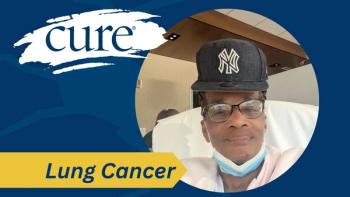
A Few Thoughts On Olivia Newton-John
The words celebrities use carry an enormous amount of weight.
This past week, in a
Whenever there is further spread, or progression, of breast cancer outside of the breast it means that efforts to control the cancer have failed, at least for the moment. Yet, as the news spread around the globe, I felt that outlets didn’t share the most basic facts about metastatic cancer. Instead, as in “
On “Good Morning America,” cancer survivor and host Robin Roberts and Dr. Jennifer Ashton explained that cancer can metastasize/recur or there can be a second primary tumor. But in the specific case of Newton-John, who has said that the sites at her shoulder and the base of her spine, are returns of the breast cancer, there is little question that this is metastatic disease. As I watched the GMA clip, I thought it would have been helpful for the hosts to be specific about what metastatic disease is and why this is what Newton-John is facing. Although people can be diagnosed with multiple primary sites of the same or different cancers, when we're talking about breast cancer that has spread to the bones (or liver, lung, brain, etc.), it is metastatic cancer.
Newton-John is a symbol of hope and inspiration to many, so in some ways it is understandable that the press would be reluctant to use the terms metastatic, advanced, or stage 4 when she, herself, didn’t use them in the above-linked interview. However, in light of this recent news, it is right to point out a few facts about metastatic breast cancer and its care.
Label it correctly. Yes, privacy and gentleness matter. Olivia Newton-John didn’t use the term “metastatic cancer.” Yet, how else to describe a cancer that has spread outside of the primary site to the bones? Metastatic breast cancer is scary, but it is not so scary that it cannot be mentioned.
Metastatic means treatment for life. Cancer that has spread beyond the primary site most often means that the person will be in continuous treatment of some kind. Treatments are not considered curative, although many achieve no evidence of disease (NED) or no evidence of active disease, which means that the current treatment protocol has eliminated active metastases that can be seen on scans. Being NED does not necessarily mean the cancer is gone, and it does not mean an end to treatments. Unfortunately, the median survival for metastatic breast cancer is 36 months.
Today, as drug choices expand and research generates new options, metastatic breast cancer patients typically string together months or years of survival through a sequence of drugs, moving to a new one as the previous one fails and progression is seen. In my case, with HER2-positive metastatic breast cancer, I currently receive two drugs once every three weeks. At some point, it is likely my cancer will progress, and I will have a different drug protocol. I will not consider myself to be facing a “second battle.” It will be, frankly, a worsening of the unfair fight I am already in.
Hope exists. I am a good example of why there’s hope. Before the discovery of Herceptin (trastuzumab), HER2-positive breast cancer really was a death sentence because it was aggressive and didn't respond well to conventional chemotherapy. Today, I am alive nearly four years after my metastatic diagnosis and I know other women who are alive many years beyond that. I live with hope, but I am also realistic and aware of what many therapies, including my own, offer. Research into metastatic cancer often uses progression-free survival as an endpoint, and that is typically in the range of months. If you want to see strength, look to any metastatic cancer patient. We get on with our lives, just like Olivia Newton-John has done since her initial 2013 recurrence, and we do it well and for as long as possible.
It is progressive. On “Good Morning America,” Dr. Jennifer Ashton used the word “chronic” to describe life with cancer. In fact, the CDC does list cancer among the chronic diseases that it considers most frequently due to causes an individual largely controls: diet, tobacco use/secondhand smoke, poor nutrition, lack of physical activity and excessive alcohol use. No wonder so many people with metastatic cancer feel defensive and might not want to share their diagnosis. In reality, we know that bad luck and genetic drivers influence whether or not someone’s risk factors will result in cancer. Eliminating all of those risk factors is simply no guarantee that you won’t get cancer.
By standard definition, metastatic disease is technically a chronic disease. However, it is quite different from a disease that can be controlled for a person’s normal lifespan using one drug that is largely and continuously effective from the moment its use begins (such as with insulin for diabetes). Similarly, rheumatoid arthritis, while a chronic disease, is unlikely to kill a sufferer if she stops taking medication to control it. This is not the case with metastatic cancer, as Dr. George Sledge points out
As I wrote above, treatments have certainly improved, and some of us are lucky enough to have good and continued responses to those drugs, but the reason there is more than one HER2-positive drug, for instance, is because responses vary, and the cancer can develop resistance to the treatment and/or mutate. This makes constant oversight of the cancer, through scans at this time and hopefully soon through the blood, a necessary aspect of care. Even with continuous treatment, metastatic breast cancer patients cannot expect to live as long as healthy cohorts. In my opinion, a disease that can be expected to kill you in relatively short order even with ongoing conventional treatment is not a chronic condition.
There’s a question around marijuana. Among the people I know, marijuana is most often used to alleviate pain at metastatic sites. That, and helping with sleep, appears to be how Newton-John is using the plant. In her interview, though, when asked about treatments, she states, “I’m treating it naturally, and I’m doing really well.” She has also used conventional treatments including radiation.
The use of marijuana as a management tool for issues such as pain, sleep, appetite, neuropathy and disease have been researched and continue to be
Progression is not a dirty word. A cancer that progresses to a new location is not a new cancer. It is the progression of the same cancer and will most likely require changes to the prescribed treatment. The daily choices of diet, exercise, positivity, hope and prayer are wonderful for quality of life, but these are not curative. Having progression is not a failure. It is painful to watch someone struggling with progression. It is awful to know that whatever you have been doing has stopped working, or maybe never worked at all, but it is not shameful, and neither is metastatic disease.




